Celebrating Holiday Eve
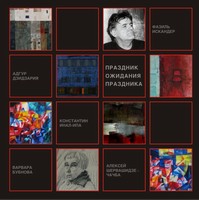 Art project Art project
Information about the artists
videos:Time of Нappy Discoveries
archive:Celebrating Holiday Eve
|
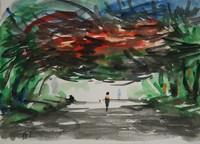 Varvara D. Bubnova (1886 - 1983) Varvara D. Bubnova (1886 - 1983)
The name Varvara Bubnova is of course well known to all the connoisseurs of the twentieth century art. She lived a truly amazing life; not one, but three, leaving us a legacy of paintings, drawings - surprisingly deep, filled with soft lyrical tones, evoking Tsvetaeva's lines: "- It is strange to feel so strongly and so simply the transience of life - and of yourself."
"First Life" of Varvara Bubnova was a childhood is St. Petersburg at the turn of XIX-XX centuries, student years at the Academy of Fine Arts, same courses with P. Filonov and L. Burliuk, the famous "Jack of Diamonds", joint exhibitions with K. Malevich, V. Mayakovsky, M. Larionov and N. Goncharova.
"Second Life"was Japan, where the young artist moved in the 1920s and for 30 years tought Russian language and literature (for her contribution to the development of Japanese culture Varvara Bubnova was awarded the Order of the Precious Crown of the Fourth Degree). The paintings of that period are laconic, intimate, fairly restrained – influence of the place.
The last twenty years, "third life" of V. Bubnova were linked to Sukhumi, where she arrived in 1959, where she worked with enthusiasm, where she has finally got students - young artists. Sukhumi, Abkhazia, in the life of V. Bubnova was a period of color awakening, the pictures literally soaked in delicious flavors of the region.
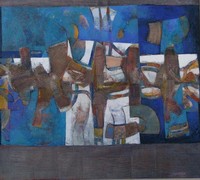 Adgur Dzidzaria (b. 1953, Sukhum) – is a modern Abkhaz artist, the President of the Artists' Union of Abkhazia, his resume contains more than ten solo exhibitions in Russia and abroad, and he participated in numerous joint projects. Adgur Dzidzaria (b. 1953, Sukhum) – is a modern Abkhaz artist, the President of the Artists' Union of Abkhazia, his resume contains more than ten solo exhibitions in Russia and abroad, and he participated in numerous joint projects.
A. Dzidzaria is interested in mysticism colour produced by a simple mixture of colors, the moment of appearance and life of the color on canvas, when the plane is no longer plane and takes on a kind of living "vibration." The artist, like the medium, weaves beautiful rugs from yarn of memories, recognitions, fleeting impulses and eternal questions. By means of these threads much is being written on canvases - "everything that has been and is still to be." Strong notes of pure color, amazing harmony of textures, the alternation of thin transparent layers and thick embossed textures create a wealth of scenic, through which the light from within penetrates.
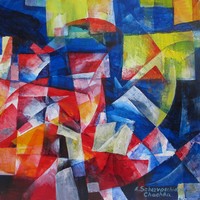 Alex Shervashidze-Chachba (b. 1959, Sukhum) – is a modern Abkhaz artist, art critic and artistic director of theater and cinema (he worked as art director in the Moscow theater Tabakov, in the theatre of V. Spesivtsev, participated in art exhibitions in Soviet Union, Russia, Germany, Japan and France). Alex Shervashidze-Chachba (b. 1959, Sukhum) – is a modern Abkhaz artist, art critic and artistic director of theater and cinema (he worked as art director in the Moscow theater Tabakov, in the theatre of V. Spesivtsev, participated in art exhibitions in Soviet Union, Russia, Germany, Japan and France).
A. Shervashidze-Chachba, like any true artist, strives to combine eternal values with the contemporary approaches to creativity. In the actual process of creating the masterpieces he searches for the answers – how should one be modern yet keep the historical value of the cultural background? How to combine the current issues with the ethnic identity full of original and unique characteristics? The artist is excited and inspired by the ancient archetypes of cultural traditions of the East, the epoch of the Greek, Roman antiquity and Byzantium. In painting, he boldly uses decorative principles of Cubism. The moving dynamics, the compositions, the interpenetration of opposing colors and shapes, gives the impression of whimsically changing kaleidoscope.
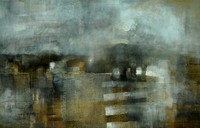 Constantine Inal-Ipa (b. 1963, Gudauta) - is a modern Abkhaz artist who participated in two dozens of exhibitions in Moscow, three of which - personal. Constantine Inal-Ipa (b. 1963, Gudauta) - is a modern Abkhaz artist who participated in two dozens of exhibitions in Moscow, three of which - personal.
Abstractions by Constantine Inal-Ipa are spontaneous, free, within them lives the sudden beauty and power of intuitive motion of sense. A further mystery - the flatness miraculously transformed into painting. Everything from which it has been created is important – the canvas, the paint, the material at hand, a well-worn fabric, old newsprint, and together the mood and state of the habitat of the author. He is not afraid to be misunderstood by refusing the external and superficial aesthetics, but rather calls to understand the tough "time of change" and find your own way of approaching the harmony and beauty. The color, in the artist's works like the light penetrates the secret treasures of the soul the inaccessible by other means. As a result, the spectator involuntarily feels that he is understood and no longer alone.
|